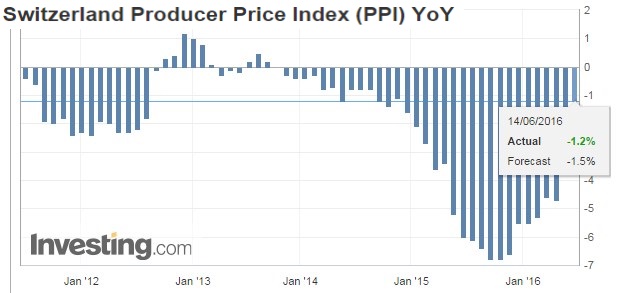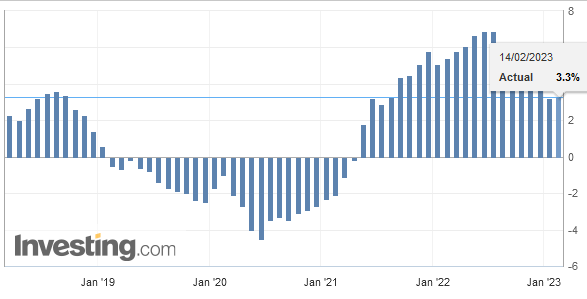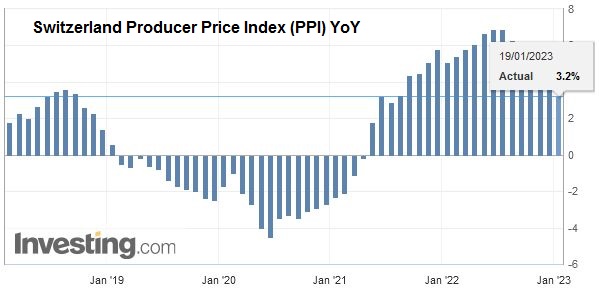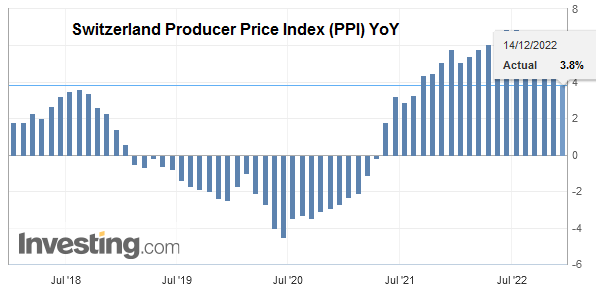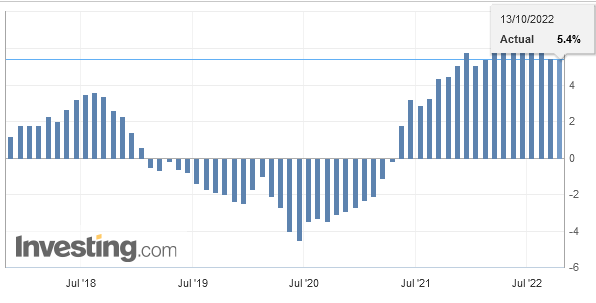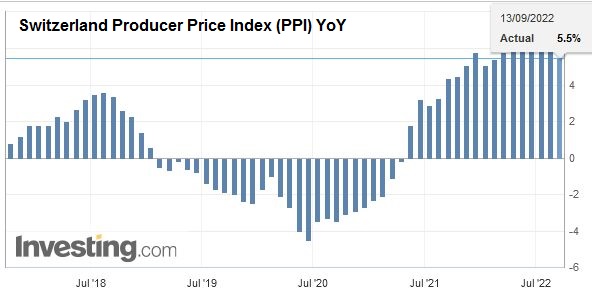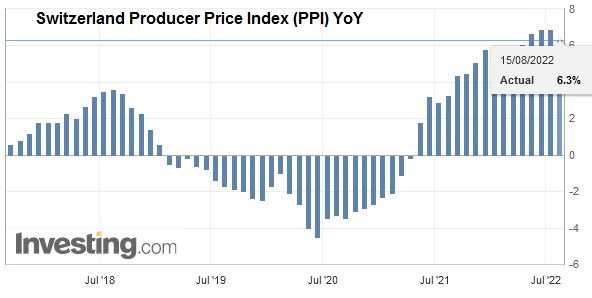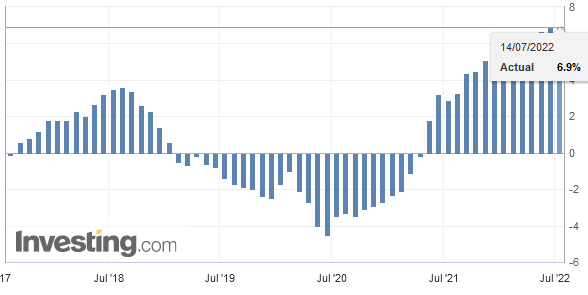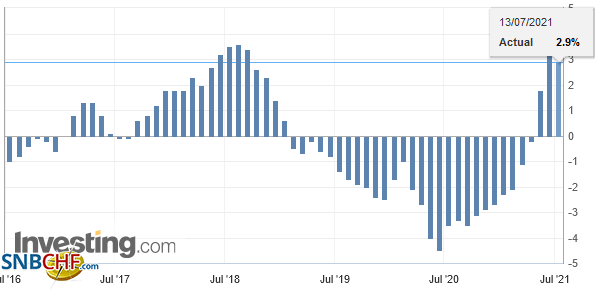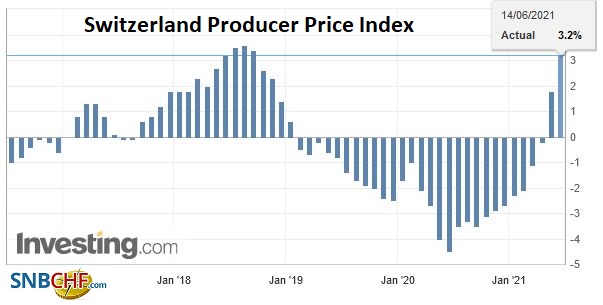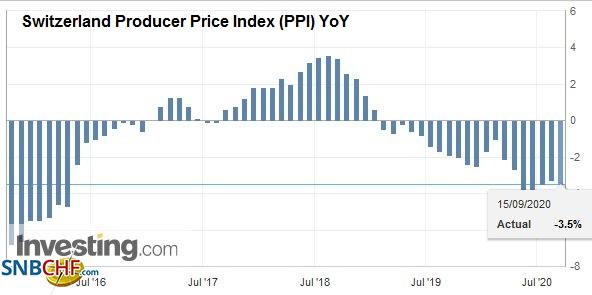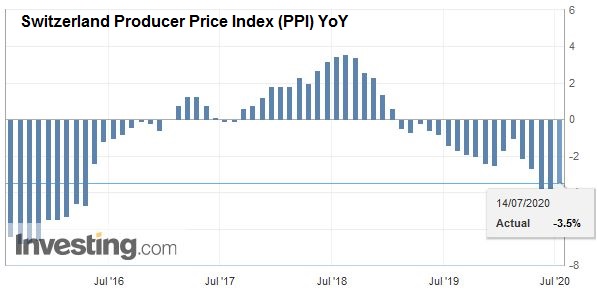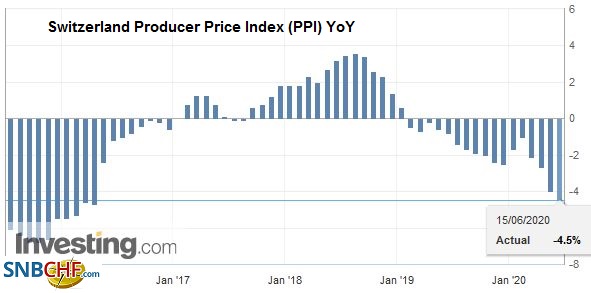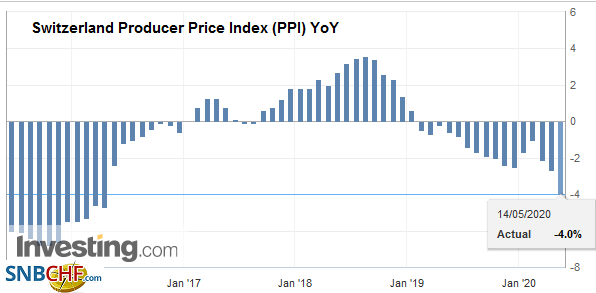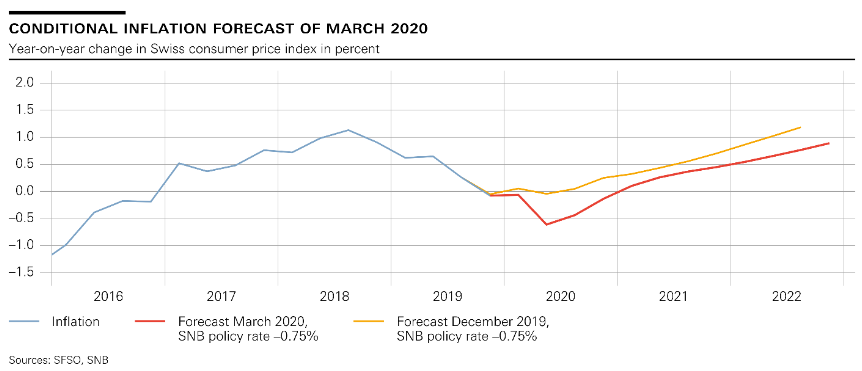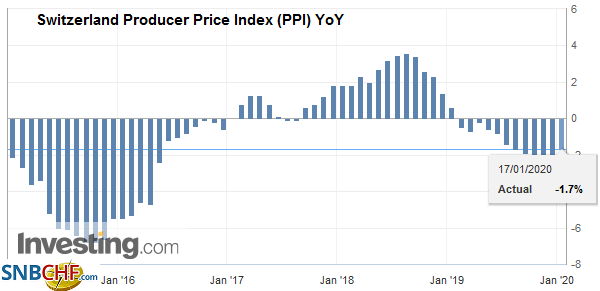14.06.2016 09:15 – FSO, Prices (0353-1606-10)
The Producer Price Index (PPI) or officially named "Producer and Import Price Index" describes the changes in prices for producers and importers. For us it is interesting because it is used in the formula for the Real Effective Exchange Rate. When producers and importers profit on lower price changes when compared to other countries, then the Swiss Franc reduces its overvaluation. The Swiss PPI values of -6% in 2015 (see below), compared to -3% in Europe or -1% in the U.S., diminished the overvaluation. See more in Is the Swiss Franc overvalued?.
Producer and Import Price Index in May 2016
0.4% rise in Producer and Import Price Index
Neuchâtel, 14.06.2016 (FSO) – The Producer and Import Price Index rose in May 2016 by 0.4% compared with the previous month, reaching 99.7 points (base December 2015 = 100). This was primarily attributable to higher prices for scrap and petroleum products. Compared with May 2015, the price level of the whole range of domestic and imported products fell by 1.2%. These are the findings of the Federal Statistical Office (FSO).
Download this press release (pdf, 129 KB)
Swiss Producer and import pricesThe strongly negative change in producer prices in 2015 reduced the Swiss franc overvaluation in terms of the Real Effective Exchange. Now, however, producer prices are approaching the zero change again. It must also be noted that producer prices had fallen by 6% in 2015, while consumer prices went down only by 1.5%. Large margins are hence remaining for the Swiss retail sector.
The producer and import price index measures the prices in Switzerland for goods sold by industrial producers to the retail sector and the prices companies paid for imports.
From the German Press Release: |
|
Produzenten- und Importpreisindex steigt um 0,4 ProzentNeuchâtel, 14.06.2016 (BFS) – Der Gesamtindex der Produzenten- und Importpreise stieg im Mai Verantwortlich dafür waren vor allem die höheren Preise für
|
|
Produzentenpreise: Steigende Preise für Schrott und ÖlFür den Anstieg des Produzentenpreisindexes gegenüber dem Vormonat waren insbesondere die Importpreise: Treibstoffpreise und Öl steigenHöhere Preise gegenüber April 2016 registrierte man im Importpreisindex vor allem für Treibstoff, |
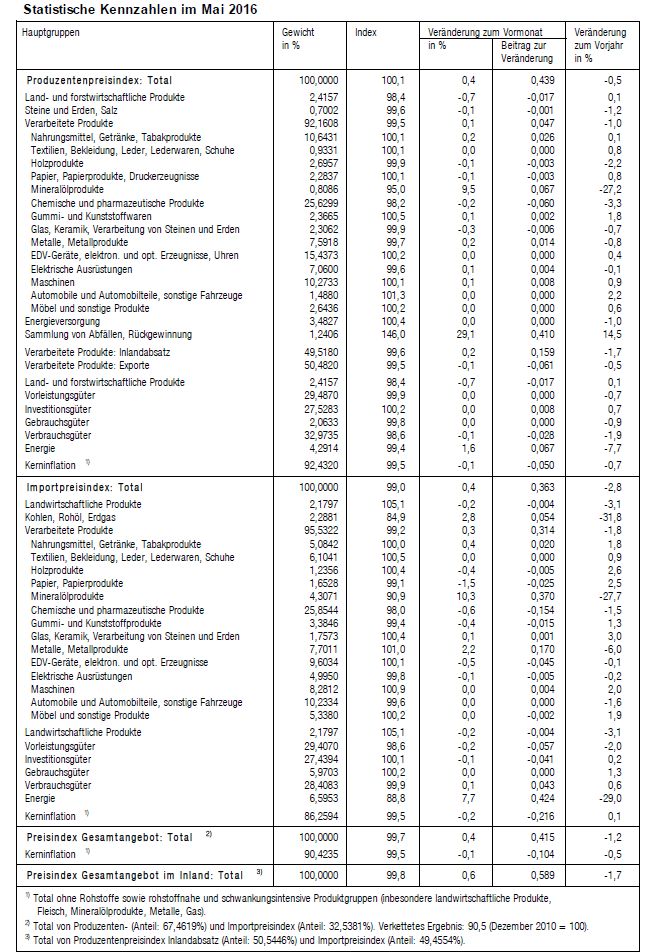 |
Full story here Are you the author? Previous post See more for Next post
Tags: newslettersent,Swiss Franc Overvaluation,Switzerland inflation,Switzerland Producer Price Index










